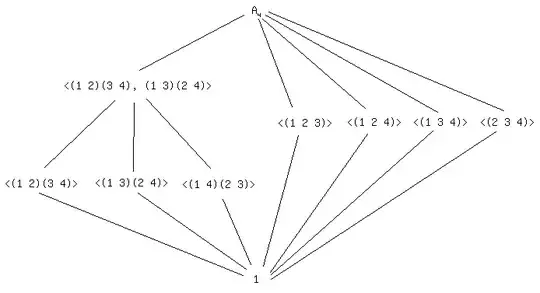I am having trouble with this problem. We just started learning it and I am unsure of how to obtain all the elements and how to form them into cyclic subgroups.
The alternating group $A_4$ consists of the identity together with eight $3$-cycles and three pairs of $2$-cycles. Each $3$-cycle generates a cyclic subgroup $H$ of order $3$. Each pair of $2$-cycles also generates a cyclic subgroup $K$ of order $2$.
Write down all $12$ elements and arrange them into their cyclic subgroups. Pick any two elements from two separate $3$-cycles (e.g. $α= (123)$ and $β = (13)(24)$ and show you can generate all of $A_4$ from these two elements. Express all $12$ elements as products of ↵ and .
Show that the $3$-cycle $α = (123)$ together with the $2$-cycle $β = (13)(24)$ also generates all of $A_4$.
What do you generate from the elements $(13)(24)$ and $(12)(34)$? Is it the entire group or is it a subgroup?
Carefully draw a subgroup lattice diagram for $A_4$.
